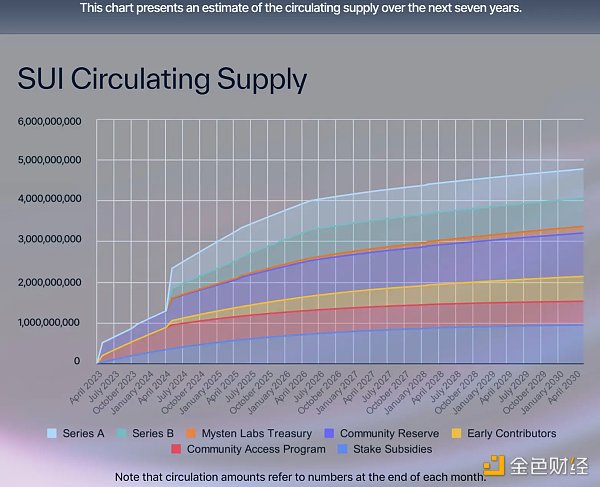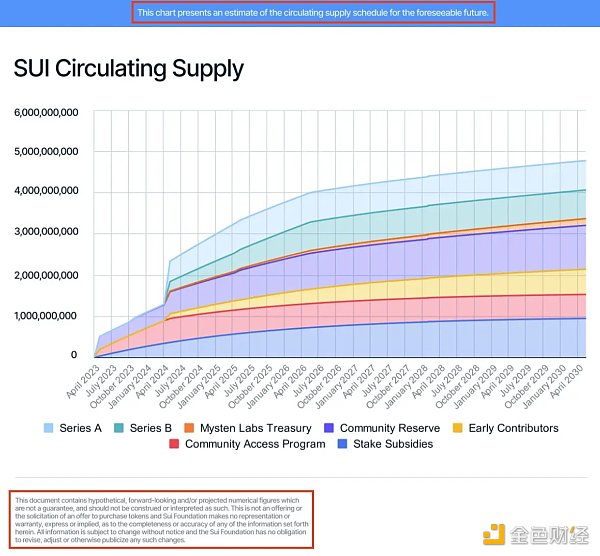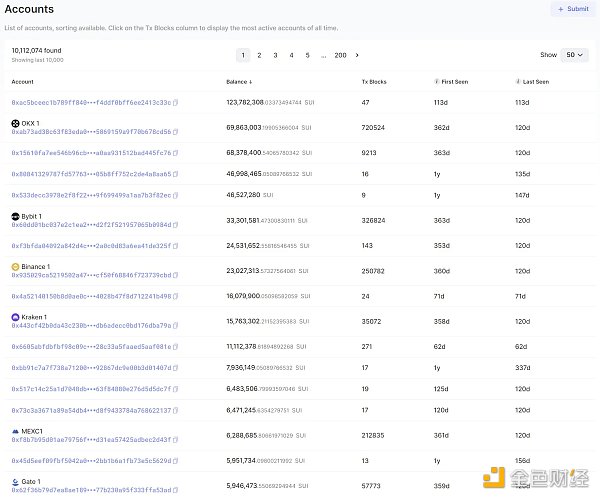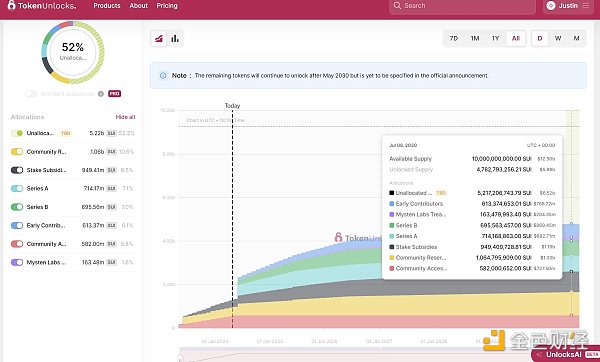Author: Justin Bons, Founder of Cyber Capital; Translated by: Frank, Foresight News
Sui’s design is great, except for its token economics: SUI claims to have a total supply cap of 10 billion, of which 52% will be “unallocated” before 2030.
But the problem is that more than 8 billion SUI have been staked, and more than 84% of the staked supply is held by the founding team. So in a way, SUI is undoubtedly centralized, that is, the founders control most of the supply, and there are no lock-up periods and legal guarantees.
That is, legal loopholes protect them, which is why the liquid supply chart released by the Sui Foundation is a lie - it means that the so-called staked SUI has no lock-up period at all!

All legal documents confirm this, as it allows the Sui team to do whatever they want with this part of SUI, anytime, anywhere.
Given these facts, much of their communications have been extremely deceptive, presenting a glaring lack of disclosure coupled with lies and unbridled greed.




We previously asked SUI to disclose their addresses, but they refused. They did reveal that the SUI is held by custodians, specifically BitGo, Anchorage, and Coinbase Prime.
However, this implies that someone does have legal title to the entire “unallocated” SUI supply. These custodians must work with legal entities, as Cyber Capital does with BitGo.
In short, they do not enforce vesting periods, but rather enable centralized institutions to securely hold their cryptocurrency, which confuses the issue of centralization as these institutions use multiple staking services.

That is to say, we don’t even know whether it is the foundation or the for-profit organization Mysten Labs that controls this part of the pledged SUI. It may even be some random individuals behind it - without further disclosure from the core team, we really can’t know the details.
For a project that has raised more than $330 million, this is completely unacceptable.
In addition, of the total supply of 10 billion, 160 million were allocated to the for-profit organization Mysten Labs, 600 million were allocated to "early contributors", and nearly 1.5 billion went directly to venture capital firms...
Plus more than 1 billion "staking subsidies" - these subsidies will eventually return to the founding team because they actually control most of the staking shares.

At the same time, SUI did not conduct a public sale at all (that is, 100% pre-mine), which is also a trend in cryptoeconomics in the past few years. SUI is one of the worst examples, especially considering the "unallocated" part of the supply.
This is why I wrote this article. We must raise the bar for the benefit of the entire industry. After all, describing Sui's token allocation as "excessive" is a huge understatement.
To date, Sui still refuses to disclose information about the majority of its token supply, which puts us at extremely high risk because Sui's leadership actually controls the network consensus.
Not only can they manipulate consensus, but if they decide to sell, they can also cause the entire market to collapse overnight. However, from a game theory perspective, they are more likely to choose to slowly drain the interests of retail investors by gradually selling.
This may explain why SUI has a "supply cap", but it is obviously not a project focused on the future.
Since I am about to criticize, I will propose a solution by the way. It is very simple: destroy the "unallocated" SUI supply:
This is a radical solution, equivalent to destroying more than half of the supply, worth more than $1 billion, which sounds crazy, but it will also release an incredibly positive signal!
Another solution is to hand over control of this part of the supply to a treasury address controlled by the Sui on-chain governance system. The advantage is that this part of the funds can still play a role, bringing more competitive advantages to Sui.
Sui's technology itself has great potential. Its object-oriented model allows more control and local sharding. Sui also proposed a novel solution to the problem of state expansion. Since objects require users to lock SUI, SUI will be released when the object is destroyed. This, combined with parallel processing, achieves high scalability.
In the field of cryptocurrency, few things are absolute and nothing is flawless. Sui is a permissionless public blockchain with a predatory token distribution method. Good and bad coexist. Shockingly, SUI's token distribution makes SOL look like a saint and ETH is an angel.
Faced with such a situation, we can't help but feel conflicted. However, SUI still has a chance to get on the right track. They just need to give up control of the "unallocated" supply and destroy them!
 JinseFinance
JinseFinance
 JinseFinance
JinseFinance Miyuki
Miyuki Miyuki
Miyuki Alex
Alex Xu Lin
Xu Lin JinseFinance
JinseFinance Kikyo
Kikyo Cointelegraph
Cointelegraph Cointelegraph
Cointelegraph Cointelegraph
Cointelegraph